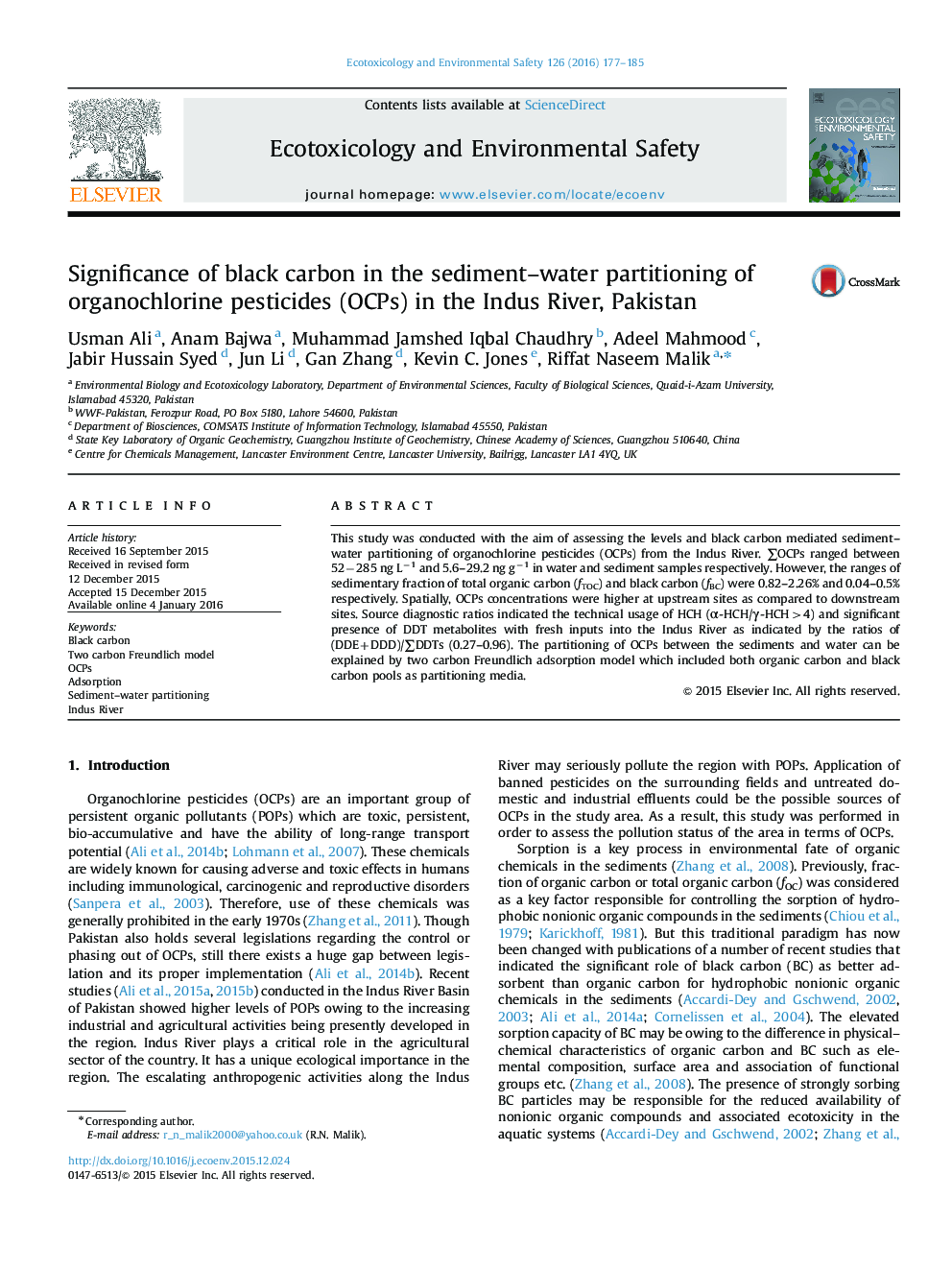| Article ID | Journal | Published Year | Pages | File Type |
|---|---|---|---|---|
| 4419224 | Ecotoxicology and Environmental Safety | 2016 | 9 Pages |
•First study that reports OCPs and sedimentary black carbon for ecologically important sites of the Indus River, Pakistan.•Black carbon showed potentially significant role in the sediment–water partitioning of OCPs in the Indus River.•Source diagnostic ratios indicated the technical usage of HCH and significant presence of DDT metabolites with fresh inputs into the Indus River.
This study was conducted with the aim of assessing the levels and black carbon mediated sediment–water partitioning of organochlorine pesticides (OCPs) from the Indus River. ∑OCPs ranged between 52−285 ng L−1 and 5.6–29.2 ng g−1 in water and sediment samples respectively. However, the ranges of sedimentary fraction of total organic carbon (fTOC) and black carbon (fBC) were 0.82–2.26% and 0.04–0.5% respectively. Spatially, OCPs concentrations were higher at upstream sites as compared to downstream sites. Source diagnostic ratios indicated the technical usage of HCH (α-HCH/γ-HCH>4) and significant presence of DDT metabolites with fresh inputs into the Indus River as indicated by the ratios of (DDE+DDD)/∑DDTs (0.27–0.96). The partitioning of OCPs between the sediments and water can be explained by two carbon Freundlich adsorption model which included both organic carbon and black carbon pools as partitioning media.
